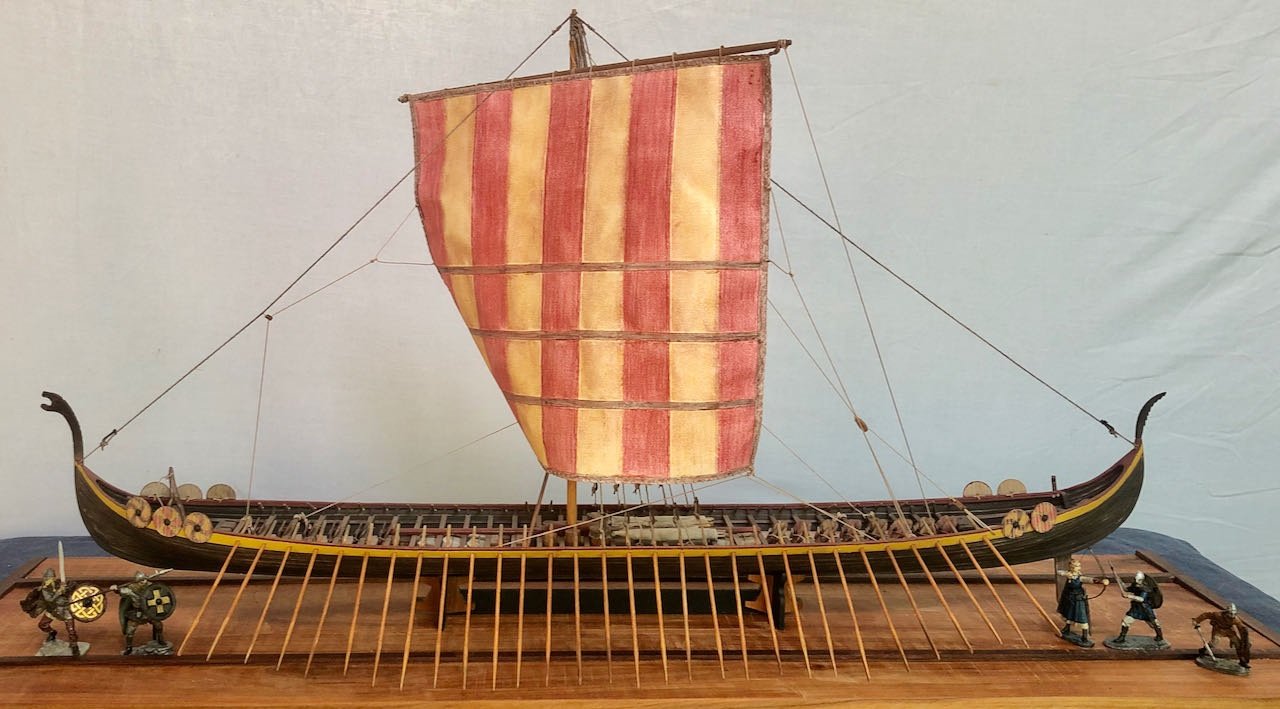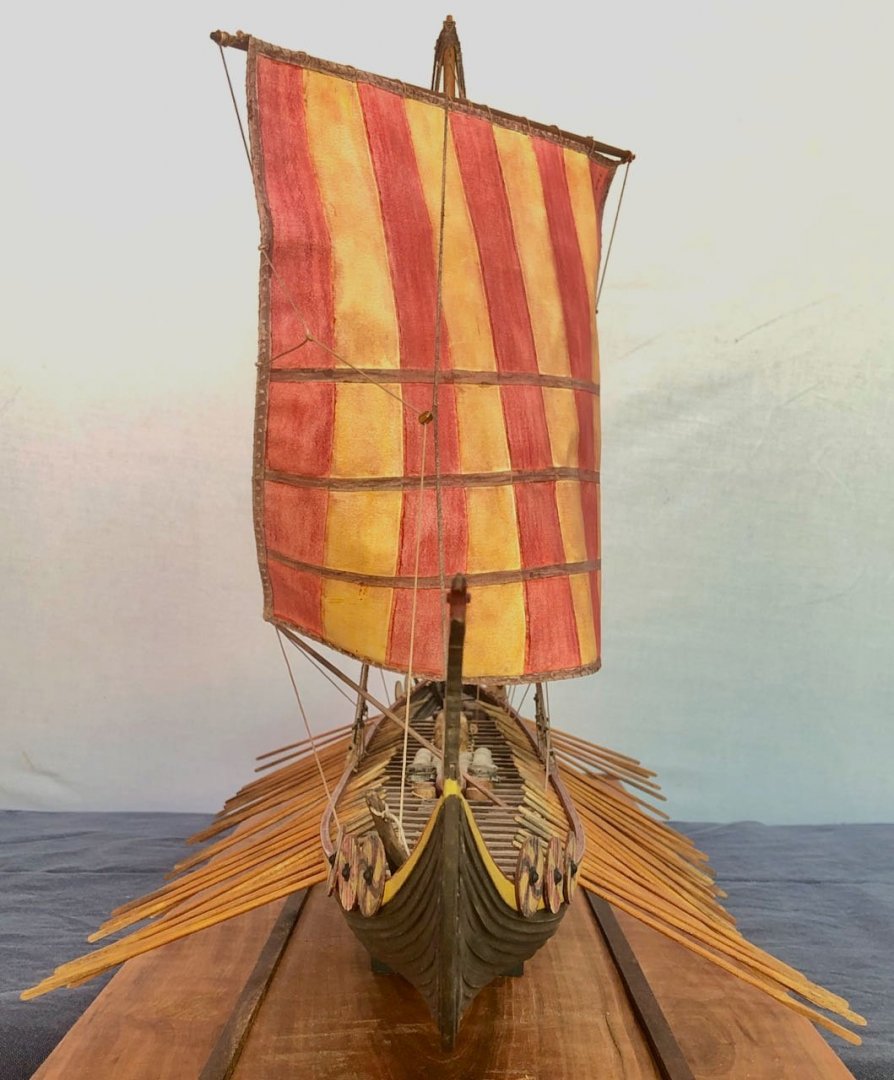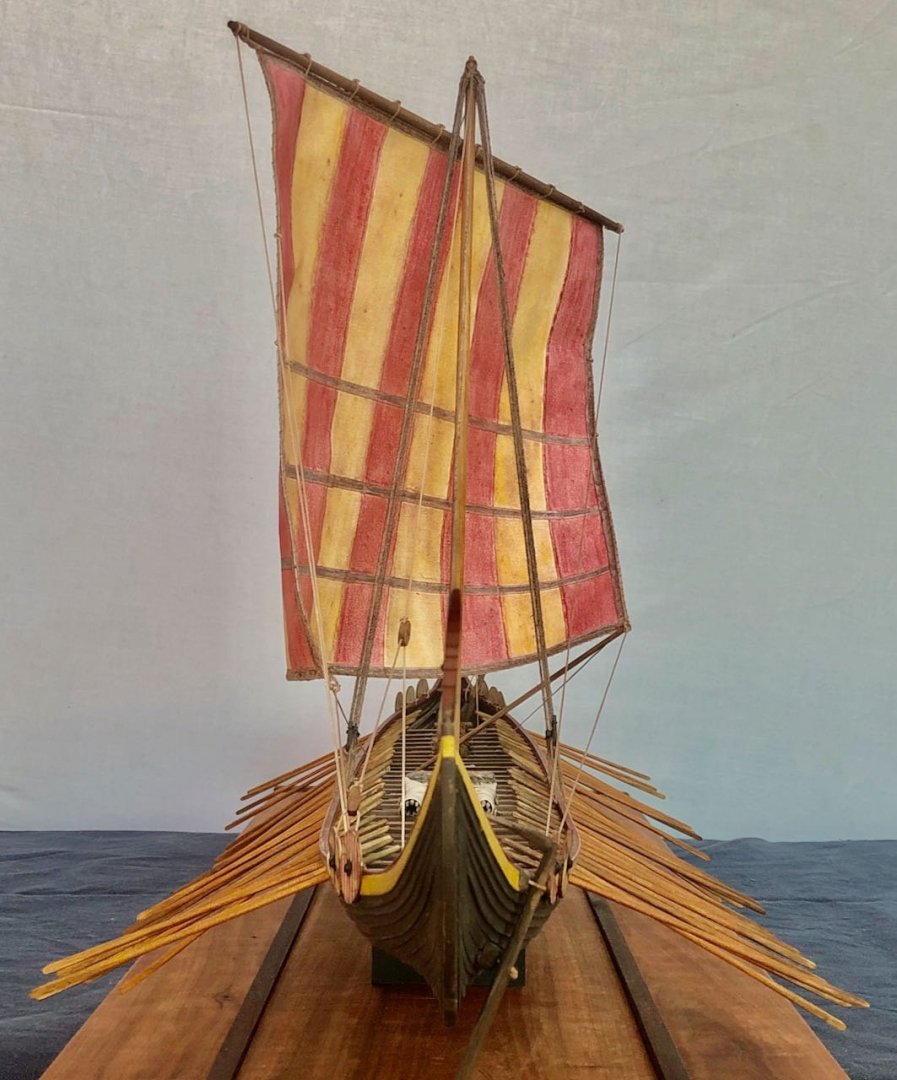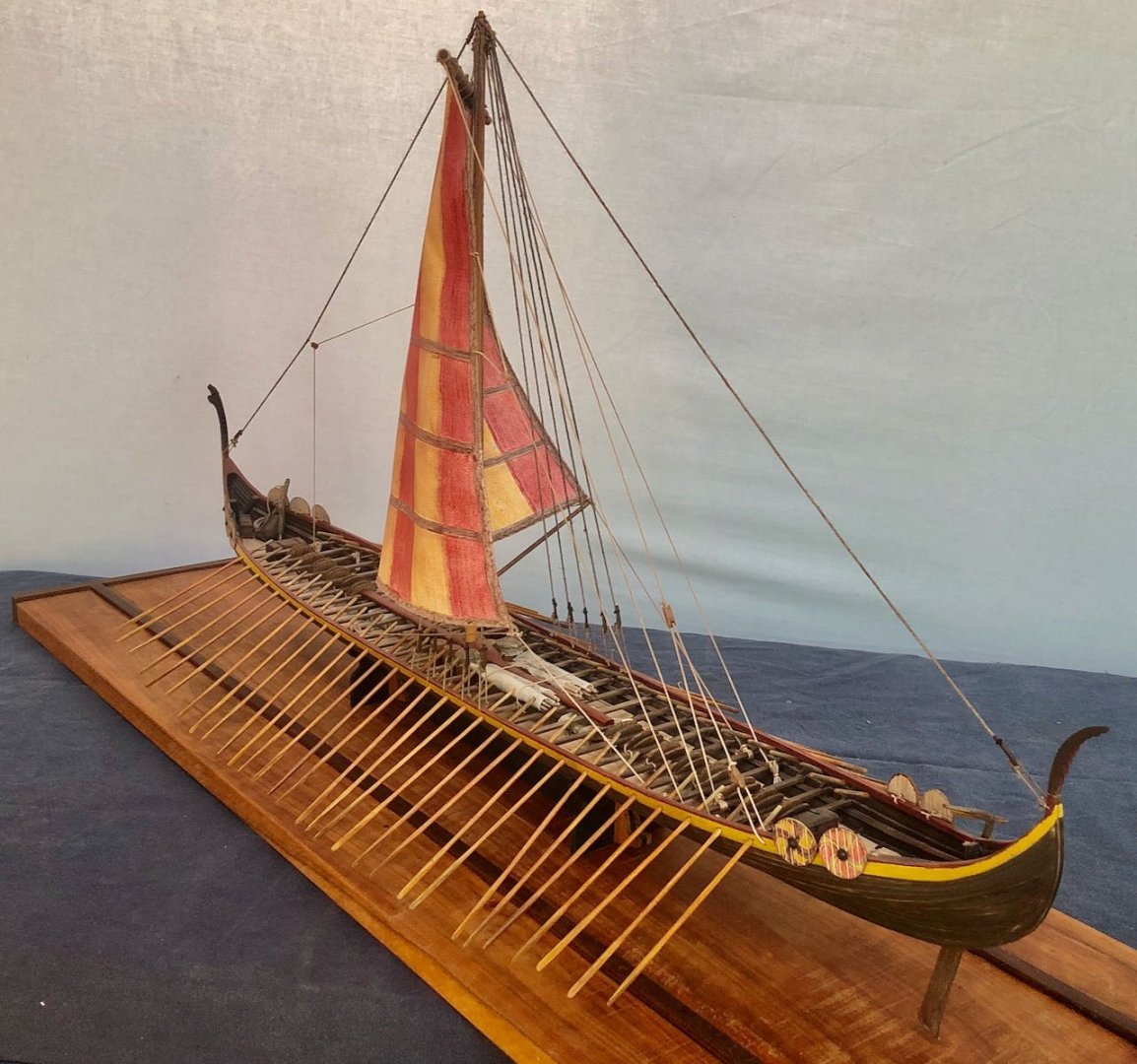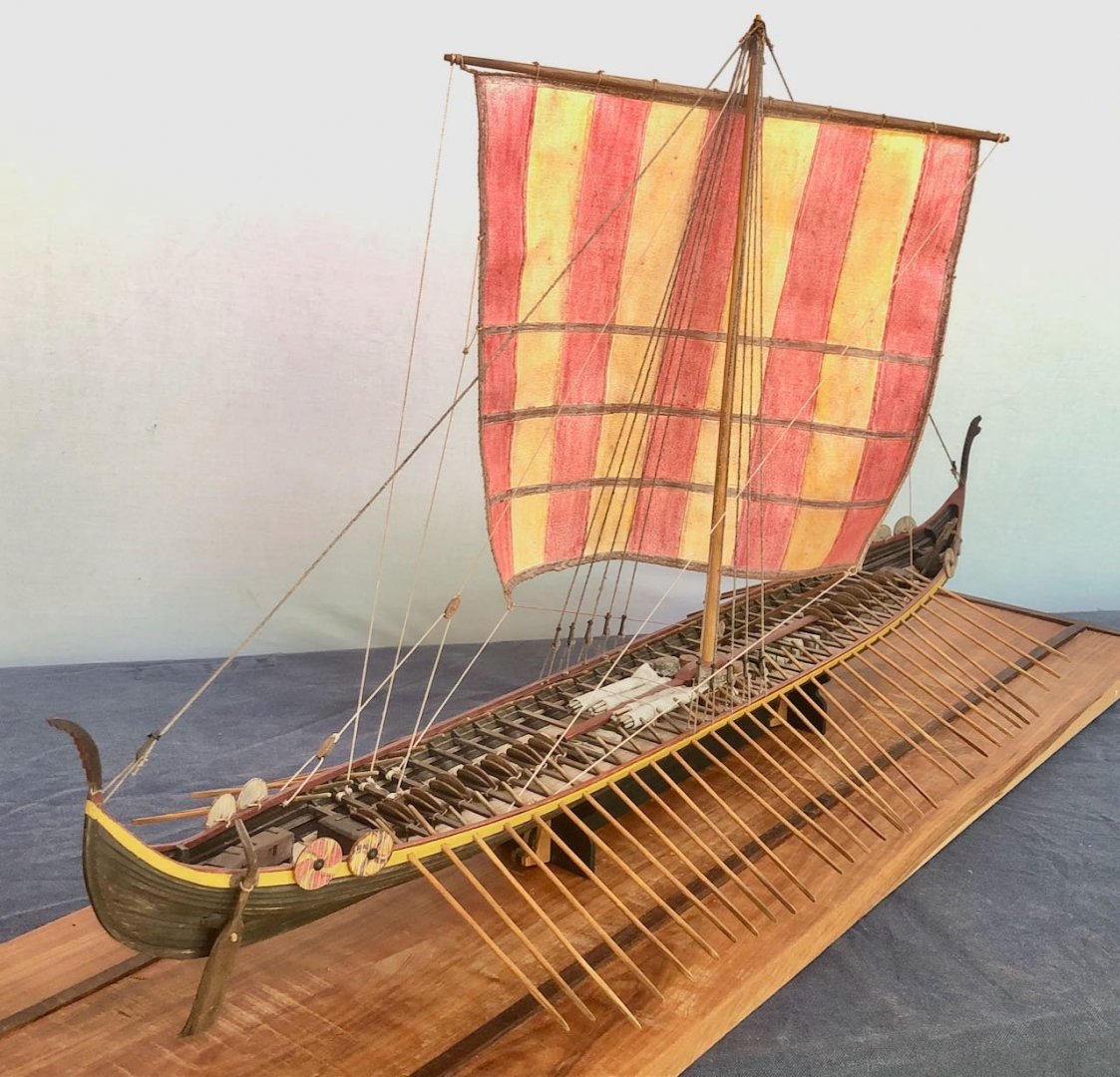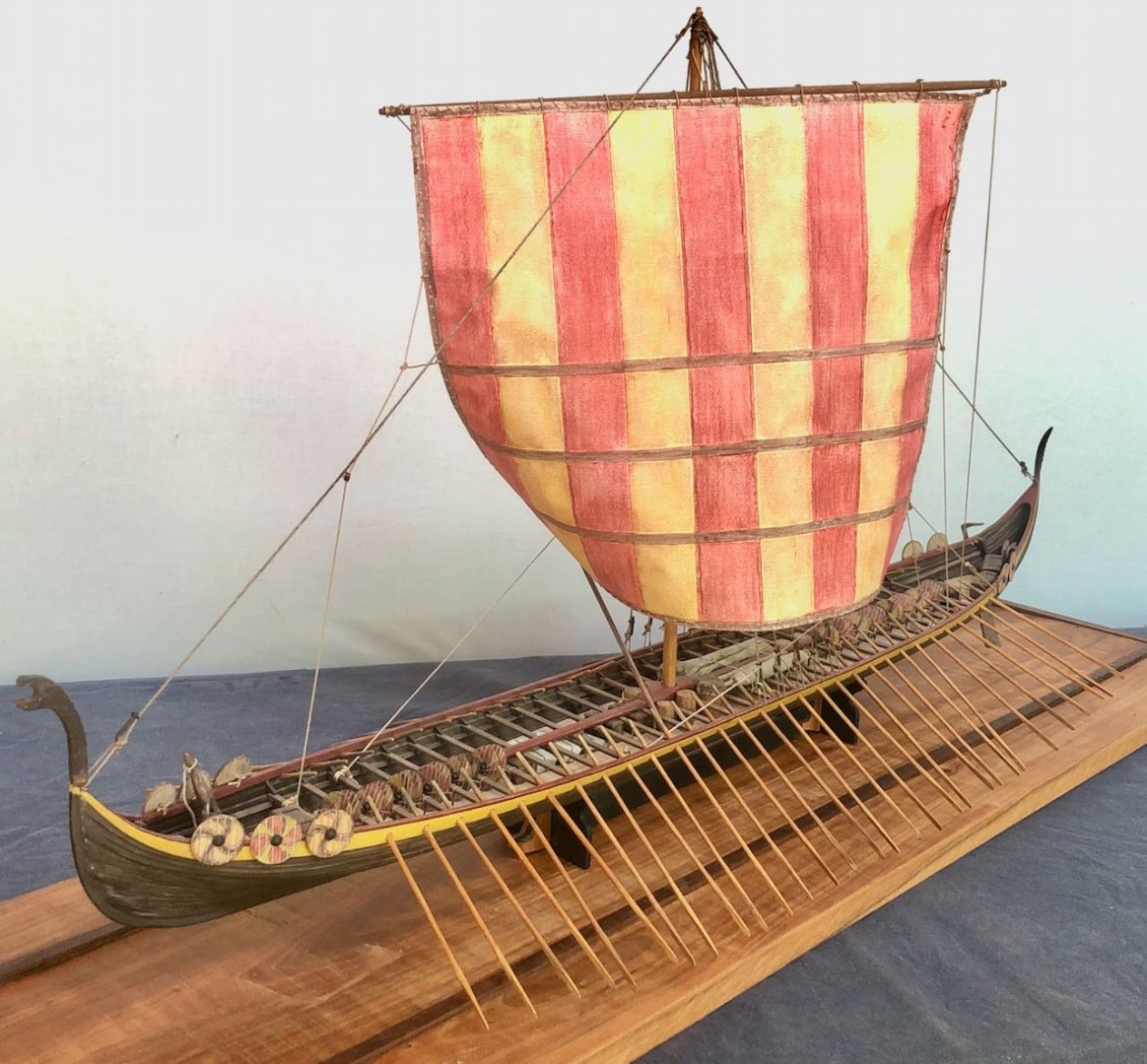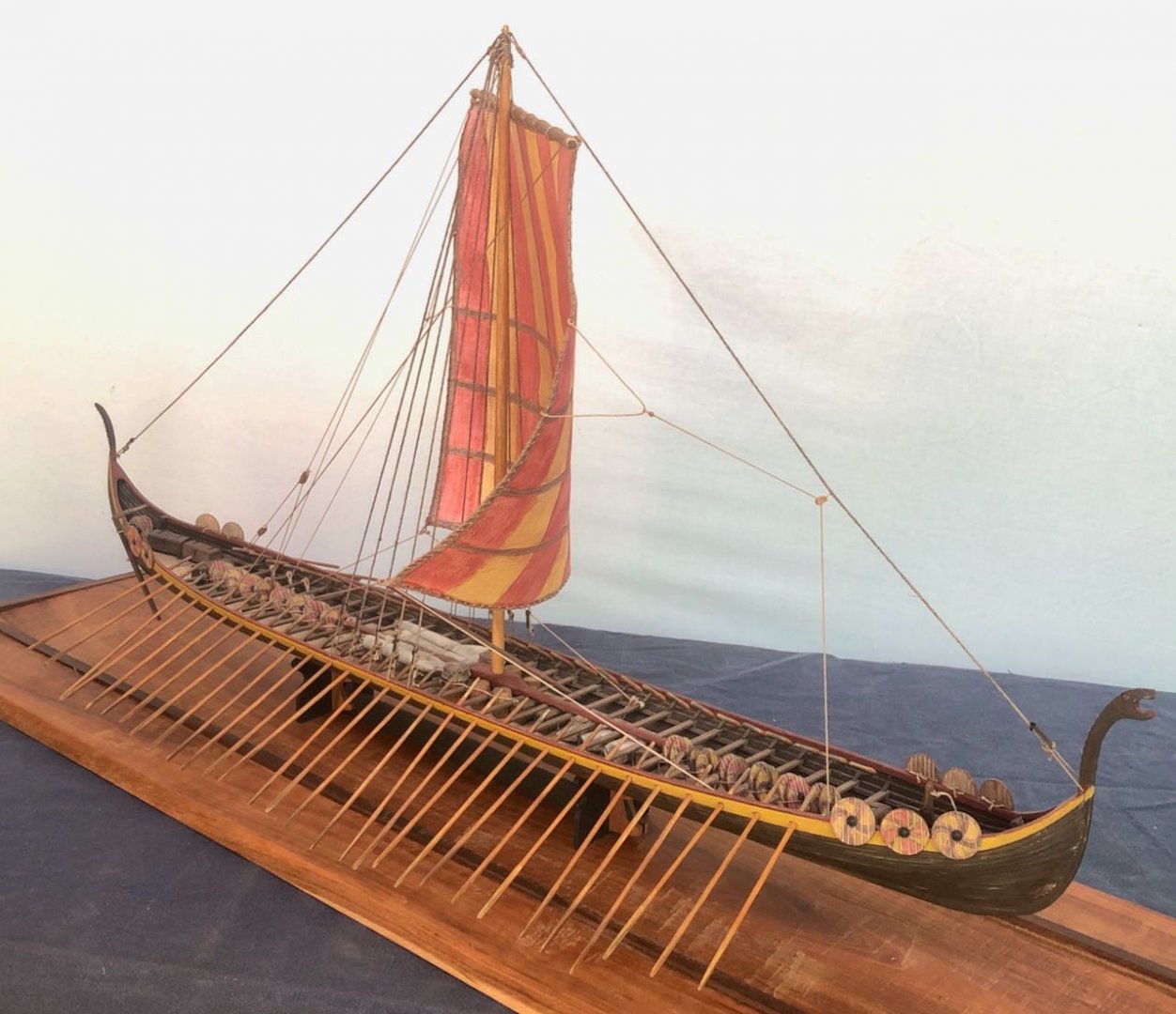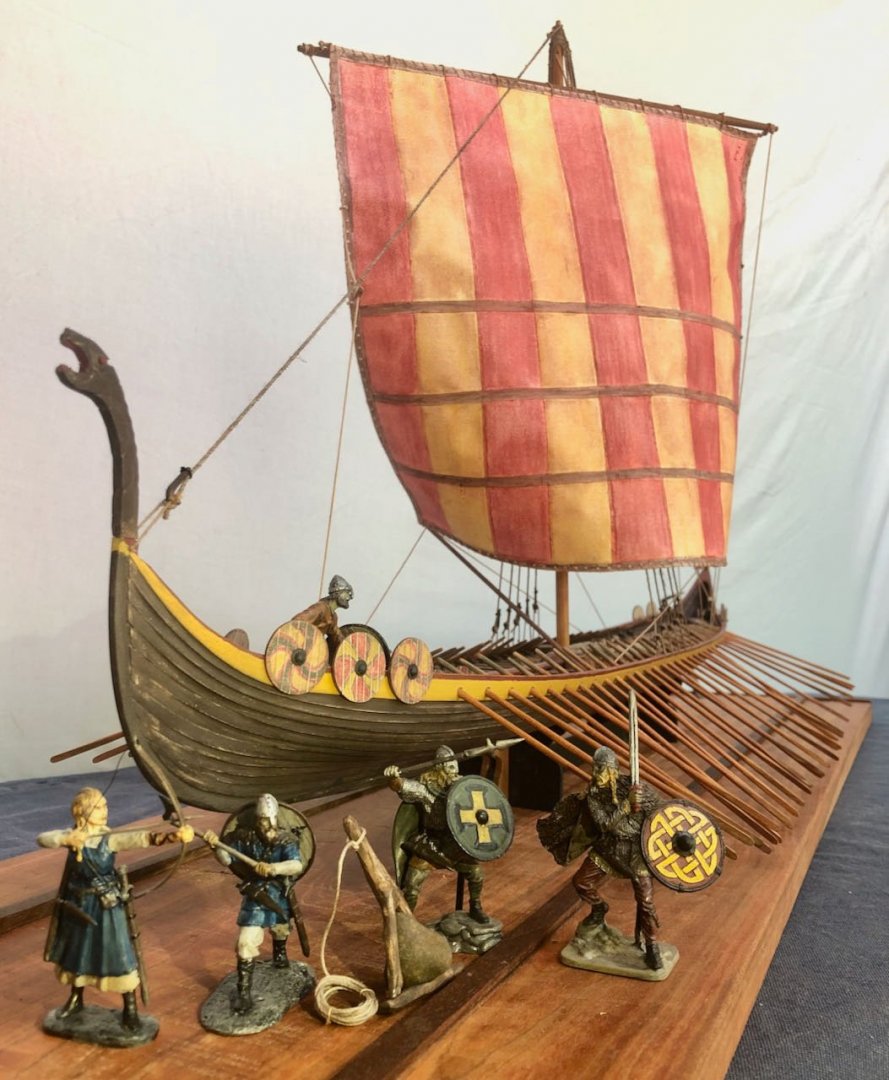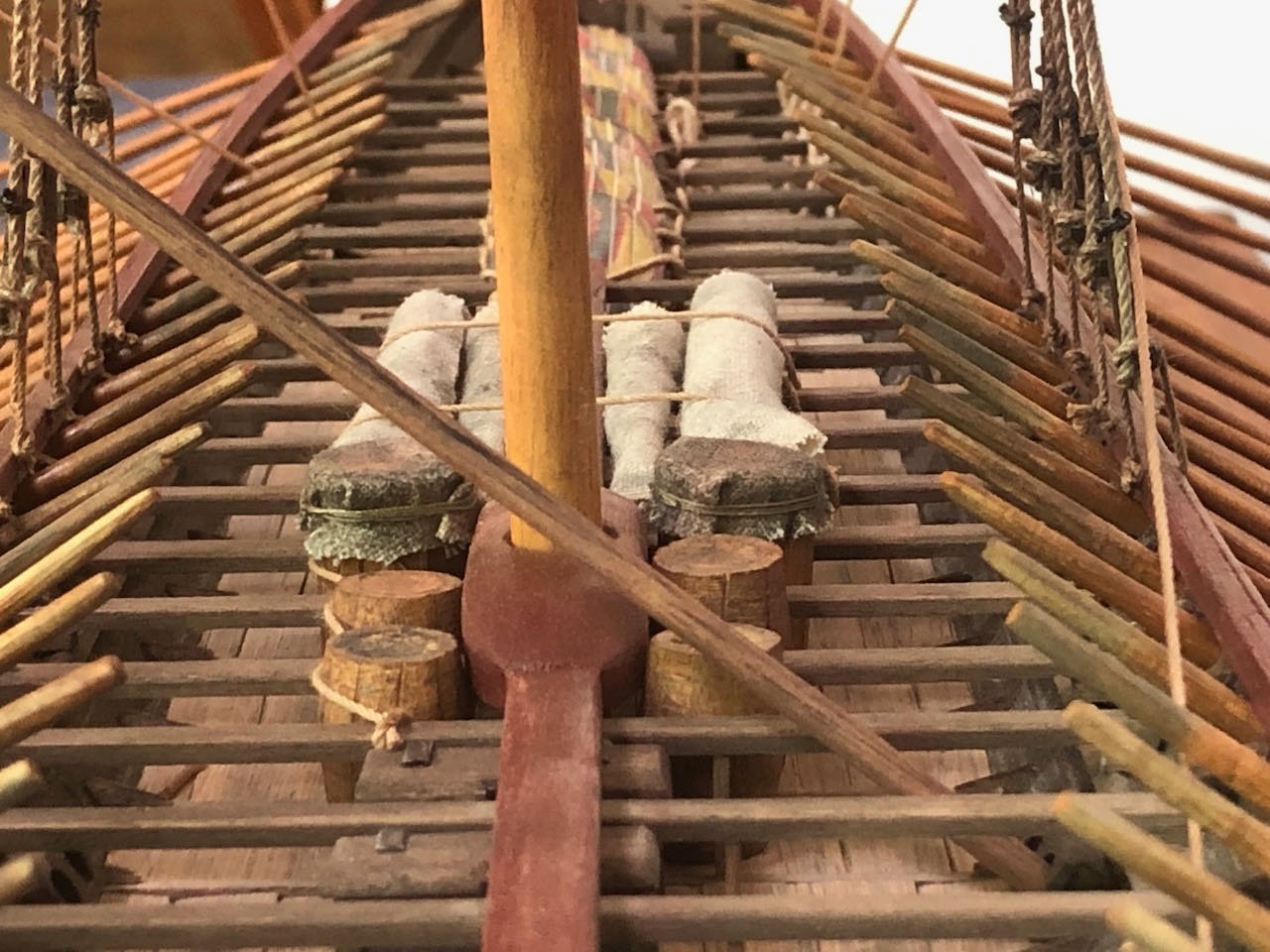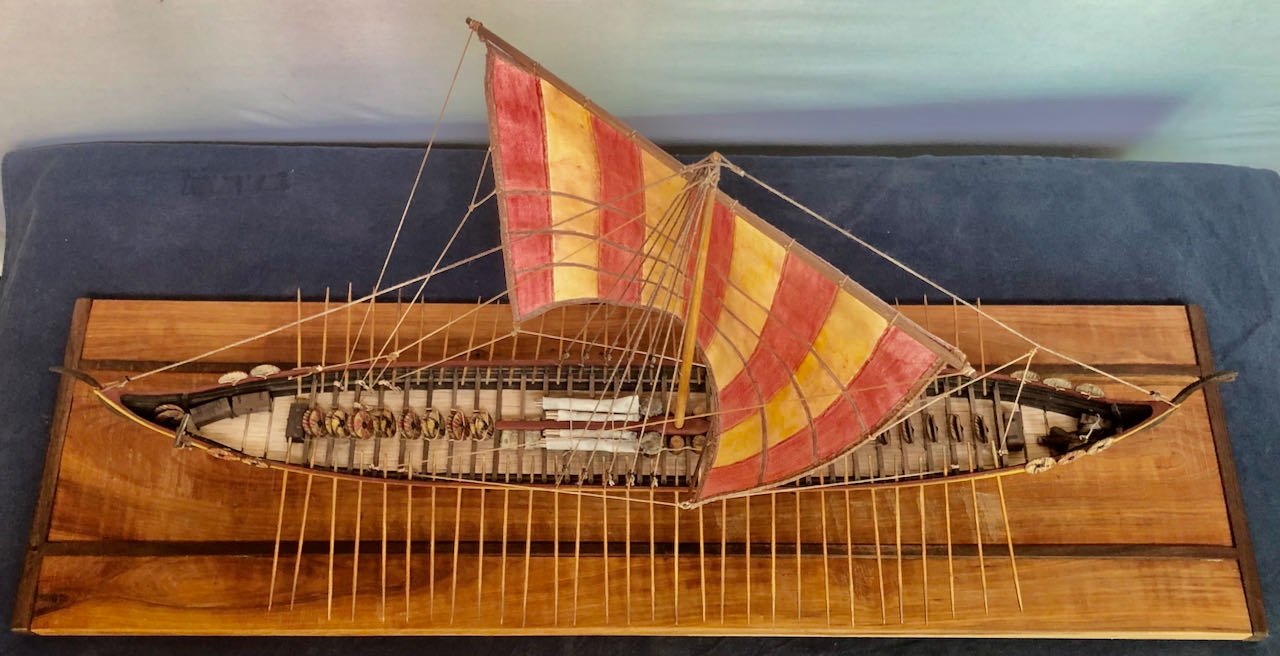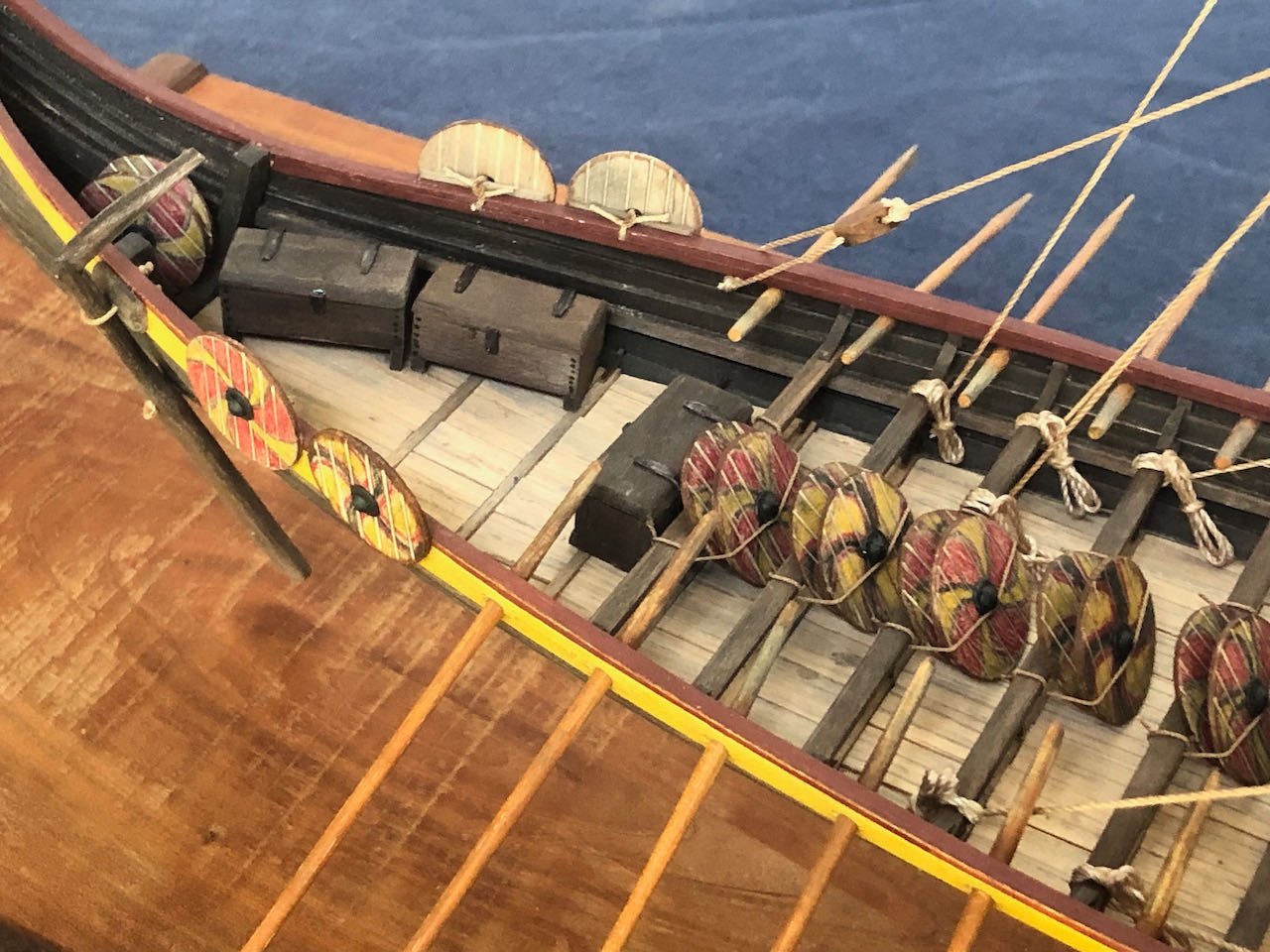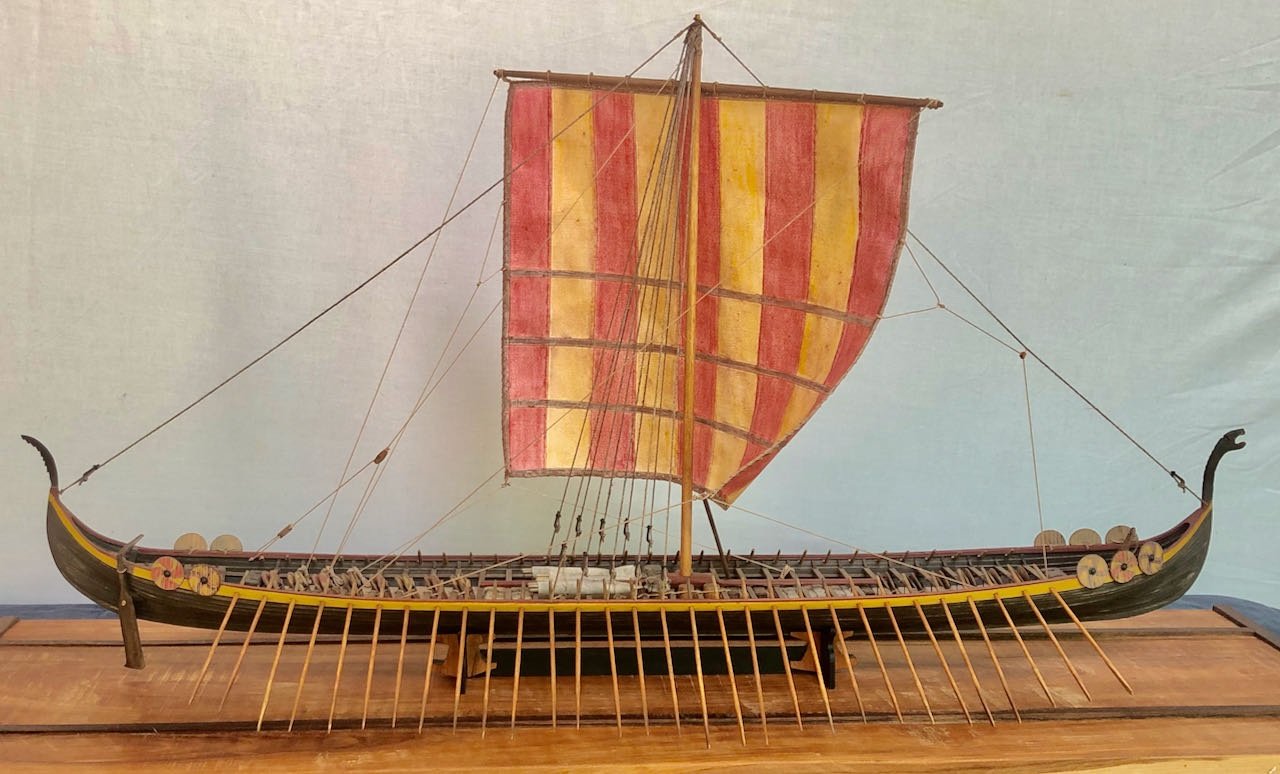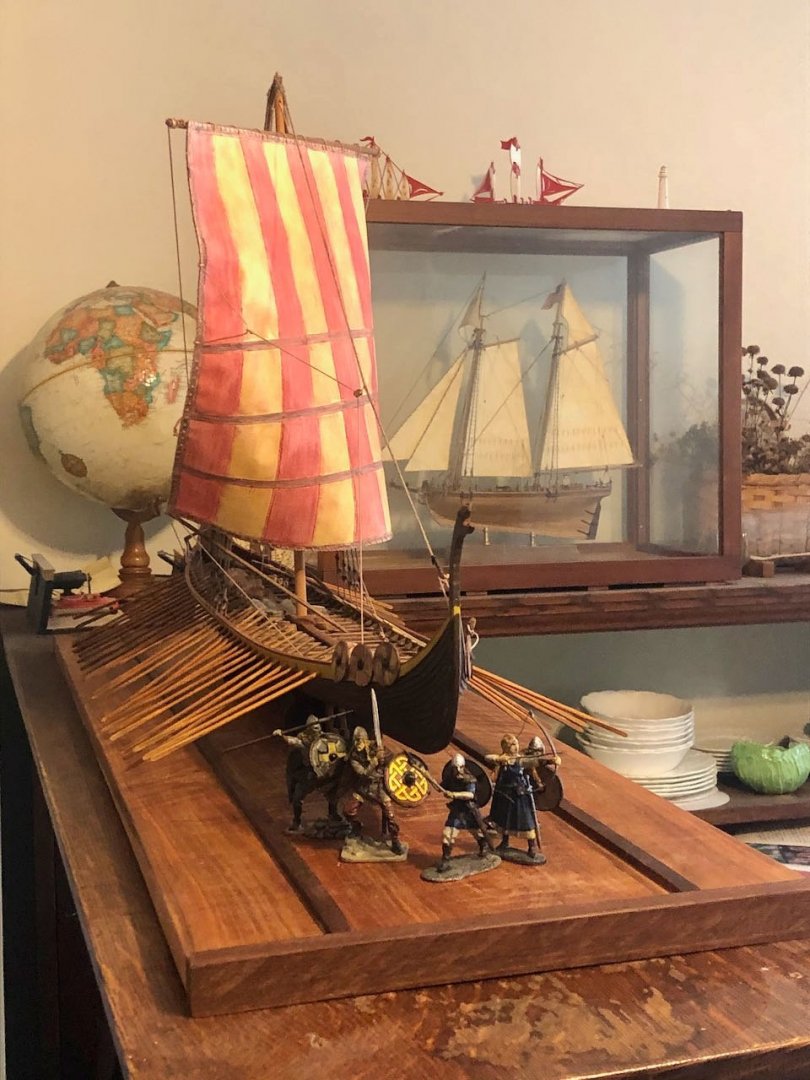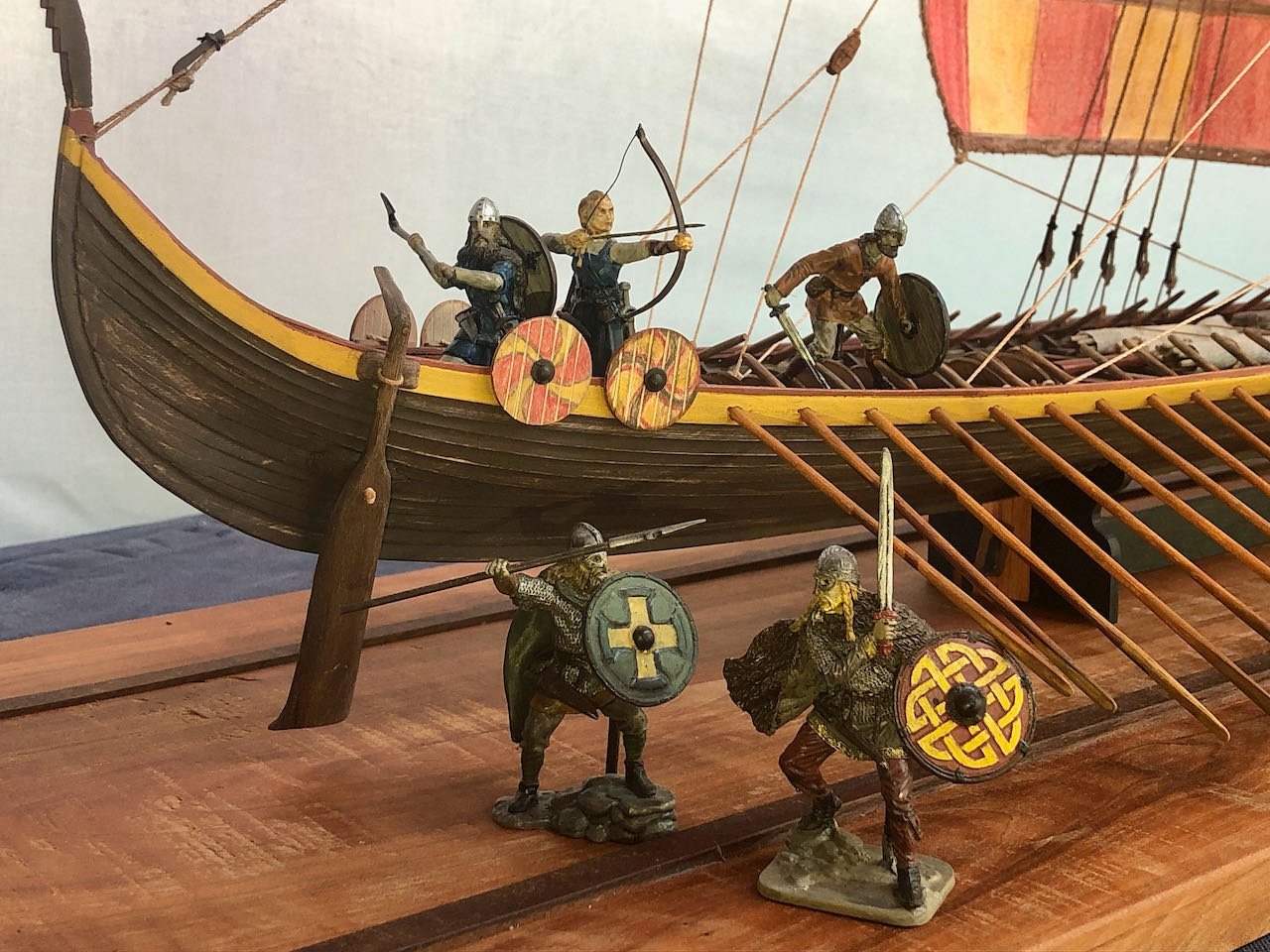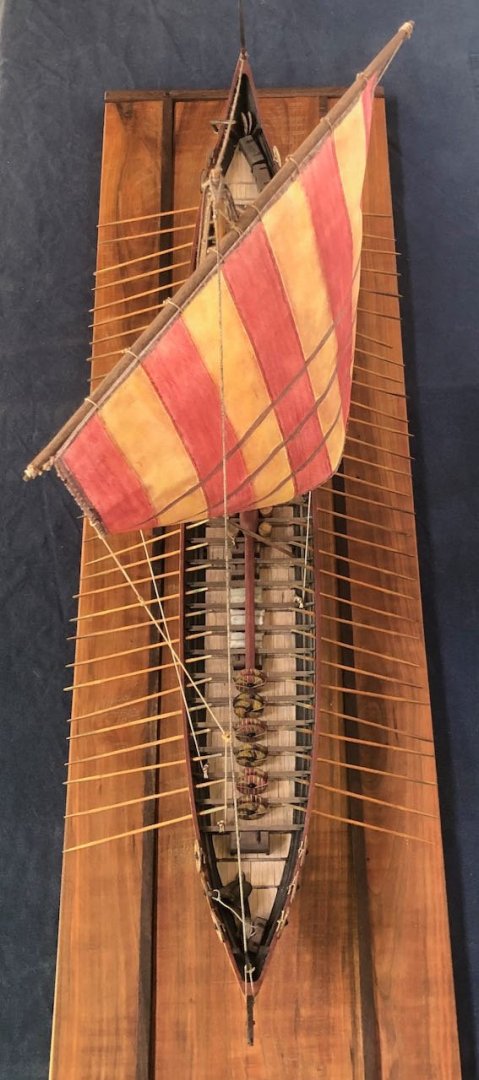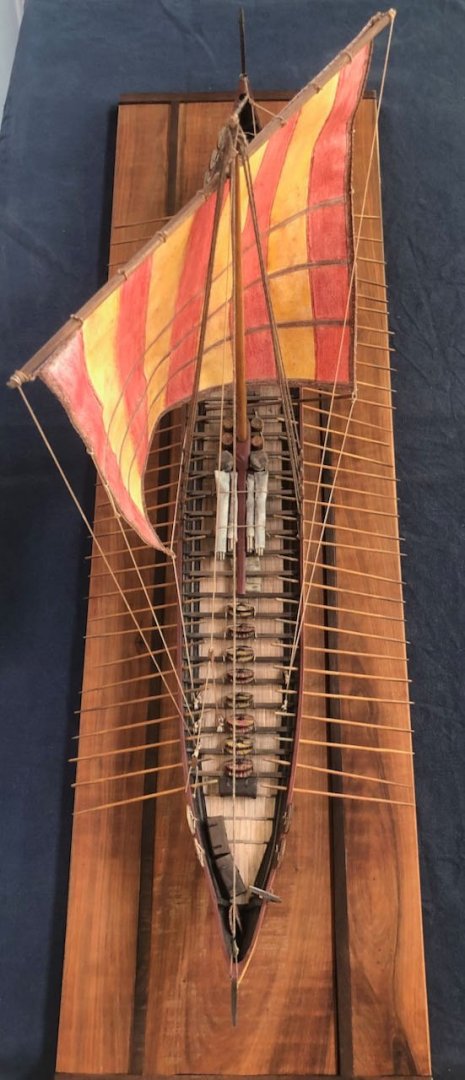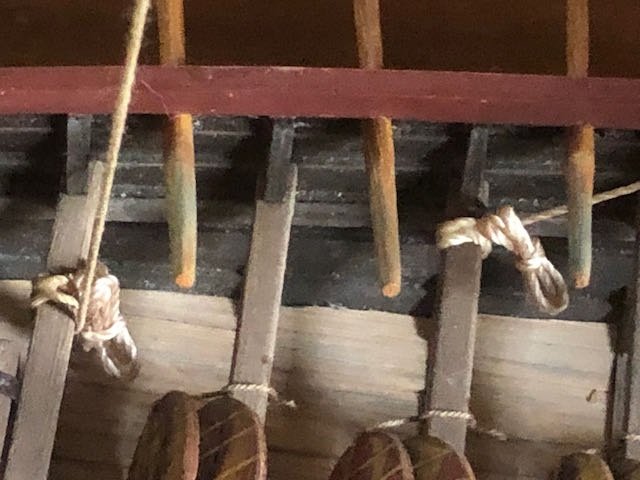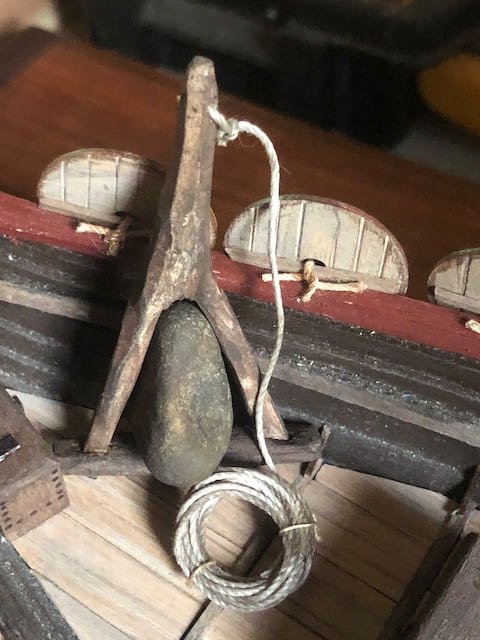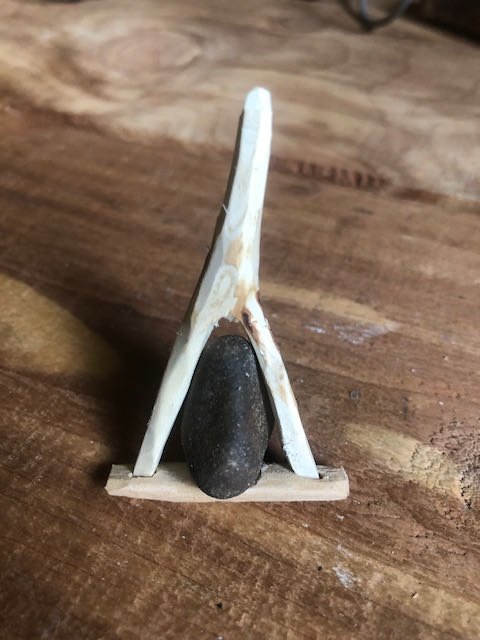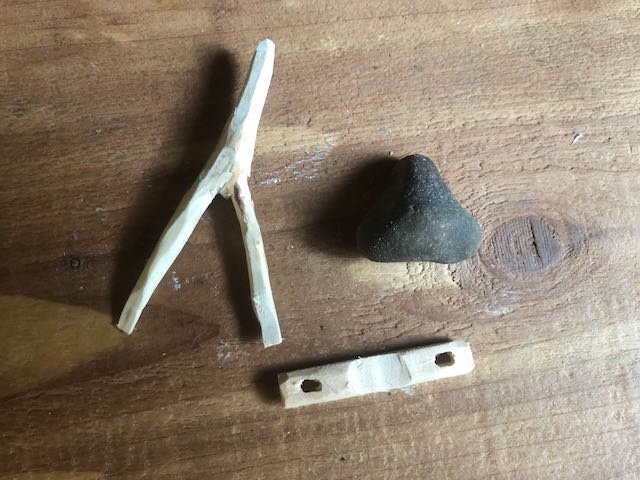-
Posts
3,538 -
Joined
-
Last visited
Content Type
Profiles
Forums
Gallery
Events
Everything posted by Cathead
-
The longship is officially finished, just over a year from when I began it. It's spanned a rather intense period of my life, including the decline and death of my father-in-law, a lifelong scholar of Old English language and Anglo-Saxon history who was very important to me. In his final days, I stayed at his bedside night and day, at times reading Beowulf to him, including these lines: You have fared in life so that far and near Forever and ever, you will be honored… Thus it is duly just That one praise his prince in poem and story And hold him in heart when he must head away Forth from flesh elsewhere. This build is dedicated to him, as well as to my proudly Norwegian grandfather who was a mentor and role model to me, and who would have loved to see this model. I can't express how much the support, advice, and discussion from all of you following this has meant in the past year. Life has been rough in many other ways beyond the above, that I don't need to go into here, but this model will always be tied to this period of life and I thank you all so much for helping me carry forward. With that being said, here are the twelve images I officially submitted to the NRG 2021 photo contest this morning (there's still time to enter your own models, the more the merrier). The first eight are required angles: After this are four optional shots highlighting whatever details are desired. So I included this close view down the central hull: This view of the chests, shields, and rope coils at the stern: This overhead view that captures more of the cargo and deck detail: And this shot of the crew ready for their next adventure: I also took these additional shots that weren't submitted but that I also like. First, another of the crew, this time at the stern: Then these two vertical views: And finally, this one of the model's temporary home. I'm working on getting a full-size display cabinet for my models that will protect the large ones like this and my Arabia more efficiently than individual cases, but for now this works pretty well: To address the inevitable question, my next two projects won't be nearly as interesting to others. I purchased two NRG learning projects to work on my planking and scratchbuilding skills. First, the half-hull planking kit, which I want to do in part or whole with wood I've cut and milled on my property: Second, the capstan project, with the same goal for wood sourcing: I'll do build logs for these, and am looking forward to working on something smaller for a change after this Viking behemoth! Thanks, again, with all my heart for sticking with me on this voyage.
-
I'm working on my submissions and found two potentially confusing errors in the NRG information. I mention them publicly here not to criticize or embarrass anyone, but in case others are confused by these before they can be addressed (knowing that NRG is all-volunteer and can't respond instantly to such things). I'm excited about this contest and the opportunity it provides people to share models that might otherwise never make it into physical contests due to travel-based obstacles. First, on the Instructions page (https://thenrg.org/contests/instructions), the link to pay the entry fee (https://thenrgstore.org/products/2021-model- competition-entry) is mis-formatted: look carefully and you'll see a space after the hyphen between "model" and "competition". This returns (https://thenrgstore.org/products/2021-model-%20competition-entry) which throws a 404 error. If the user manually removes the space, so the link correctly reads (https://thenrgstore.org/products/2021-model-competition-entry), it works fine, but many of our members are not computer-savvy enough to recognize this fix on their own. Second, there are conflicting guidelines on how to name photos. The Competition Rules page (https://thenrg.org/contests/rules) suggests the format "HMS Victory–bow quarter.jpg" but the Instructions page (https://thenrg.org/contests/instructions) says that files need to be in the format "ModelNameBowPortQtr.jpg". This is needlessly confusing and I hope NRG wouldn't reject either approach as both are clear, but it would be best to decide on a consistent requirement.
-
I'm so sorry to hear that, it must have been a devastating feeling regardless of which model it was.
- 17 replies
-
- Colombo Express
- Revell
-
(and 1 more)
Tagged with:
-
The final details have been added. First, I made a series of rope coils for each rigging line, to hide the cut-off end and because it just looks better this way. Below is just one example; no idea if this is just how Vikings coiled their lines but I don't think we can know for sure, so I'm going with it. And the final fun, an anchor. I like the look of stone anchors that other modelers have done, such as this one from killickthere's build: So I cut a few live branch junctions (so the wood would be flexible) and hunted around for a good igneous pebble that would look like the right kind of rounded glacial boulder a Viking shoreline would turn up. I found an awesome triangular one. I used a sharp knife to carve the branch junction down so it looked like an axe-hewn trunk, and made a bottom cross-piece: The cross-piece was bored so that the branch Y would have to bend around the rock a bit, helping hold it in place. The fit isn't perfect but it's the closest branch shape I could find in the time I wanted to spend on this. Test-fitting: I stained this with dilute paint and then rubbed it with pastel before installing the rock. I then made a final rope coil for the anchor. This is a big beast, but it's a big ship, and I can envision a few burly Vikings heaving this over the side with a grunt. Here it is in place at the bow: I think it gets the idea across well enough. So with this, I think I'm done adding details. Tomorrow I plan to take a full set of photos (including for the NRG model contest, due August 2), and then I'll declare it done.
-
Nicely done so far. I've always liked the look of driftwood bases.
- 33 replies
-
- Artesania Latina
- Whaleboat
-
(and 3 more)
Tagged with:
-
Glad to see you're still carrying on! You have a nice balance of wood colors there.
- 86 replies
-
- king of the mississippi
- artesania latina
-
(and 2 more)
Tagged with:
-
Oh cool, this looks fascinating. I speak some German but probably not enough to be useful in translating maritime history. You've been a great influence in dragging my interests from obscure American riverboats to even more obscure ancient ships. This looks like a good extension to the rabbit hole. I admit I was rather startled to see "Winchelsea by Louie da Fly" and wondered what prompted such a drastic change in modeling period for you!
-
Wow, that looks great. You're definitely right about the paint bringing out the realistic look. Nice job on the texturing. I like the idea of a dark/rusty maroon, something that sets off the edge a little but doesn't highlight it. I found a detailed painting of the Cairo's interior on another modeling forum in a log for the BlueJacket kit. Not going to directly post it here as I'm not sure about copyright issues (not even sure if it's from the kit or some other source), but here's a link. It's a bit grainy, but appears to show gun rigging that looks fairly standard for naval cannons. If it is from the kit, I wonder if you could source a good copy directly from BlueJacket? If nothing else, I bet they'd be willing to discuss their own research used to develop that kit and maybe help you find new information?
-
In the Heart of the Sea is another good one by him. Your vessel and base go nicely together. I hope you enjoy your hiking trip.
-

NRG Capstan Project
Cathead replied to tlevine's topic in - Build logs for subjects built 1751 - 1800
Yes, please do, this is one of my next projects and I'd enjoy reading some third-party experiences. -
Very cool prototype and kit story, looking forward to this build. Roger, if I recall correctly, Nansen's Fram was built the same way (to move upward under ice pressure) as opposed to Shackleton's Endurance, which relied on brute force hull strength. Not sure if Fram was the first to do so or was following previous designs in that respect. I would assume the builders of the current vessel were aware of Fram and any of her predecessors.
- 127 replies
-
- Bowdoin
- Arctic Exploration
-
(and 3 more)
Tagged with:
-
None here, I've never used varnish so have no useful input.
- 109 replies
-
- Finished
- Artesania Latina
-
(and 1 more)
Tagged with:
-
My hands shake a bit, too, I've learned to balance my forearms or even wrists on something when doing delicate work. It makes a huge difference. Apologies if you're already doing that; it was a bit of a revelation to me.
- 114 replies
-
- Lady Nelson
- amati
-
(and 1 more)
Tagged with:
-
This is a fantastic exercise that everyone should engage in! You have a great perspective on thinking this through as part of becoming a better modeler.
- 109 replies
-
- Finished
- Artesania Latina
-
(and 1 more)
Tagged with:
-
Huh, I'd never experienced that. I've always used a very thin sheen of wood glue on the bottom side of such pieces, since they aren't under a lot of stress and it ensures glue doesn't squeeze out anywhere else. I can see how overloading the glue might have the effect you mention (and I certainly believe you given your experience). Just interested to hear of it because I hadn't run across that effect.
- 109 replies
-
- Finished
- Artesania Latina
-
(and 1 more)
Tagged with:
-

Permission to board from the Finger Lakes
Cathead replied to Freezing Parrot's topic in New member Introductions
Hey, just saw this introduction. I grew up in the Finger Lakes and never stop missing it. Enjoy it for me and welcome to MSW! -
Another way to look at it is that blackening most metal will improve the realism but leaving metal as brass can improve the artistry. There are some very nice models that leave all fittings brass, it's very attractive, just not as accurate. My take would be to choose one way or the other for the most part (for example, as noted above, bells remain brass even if other metal is iron). Haphazard mixing (like blackened rudder hardware but brass chainplates) may look inconsistent or even silly.
- 160 replies
-
- Model Shipways
- norwegian sailing pram
-
(and 1 more)
Tagged with:
-
Just read through your log so far, great work to this point. You're really doing a nice job learning how to do things and asking the right questions. I can't wait (ok, I can) to see how this turns out.
- 114 replies
-
- Lady Nelson
- amati
-
(and 1 more)
Tagged with:
-
I agree, I don't know why they would suggest that when PVA is so much cleaner and easier to use. May be a translation issue, foreign kits are notorious for poor English. Thanks for the kind words! Lots of people find this kit to be a good entry point and it produces an attractive display piece even if it isn't particularly accurate (which isn't necessarily important). If you enjoy it and want to dive deeper, I strongly recommend Model Expo's Chaperon kit, which is the only accurate wood riverboat kit I know of. Strongly agree on Twain, and one I never get tired of rereading.
- 109 replies
-
- Finished
- Artesania Latina
-
(and 1 more)
Tagged with:
-
Personally I would use regular wood glue for all wood-wood contact. Makes a very secure and stable bond, and dries at the right rate (slow enough to allow you to set the joint, fast enough that you're not waiting days). I agree that choppers like that are wonderfully handy.
- 109 replies
-
- Finished
- Artesania Latina
-
(and 1 more)
Tagged with:
-
Enter! At worst it's a learning experience. I won silver with Arabia in the Wisconsin contest despite my photos being not all that great (wrinkled sheet behind the model and everything).
About us
Modelshipworld - Advancing Ship Modeling through Research
SSL Secured
Your security is important for us so this Website is SSL-Secured
NRG Mailing Address
Nautical Research Guild
237 South Lincoln Street
Westmont IL, 60559-1917
Model Ship World ® and the MSW logo are Registered Trademarks, and belong to the Nautical Research Guild (United States Patent and Trademark Office: No. 6,929,264 & No. 6,929,274, registered Dec. 20, 2022)
Helpful Links
About the NRG
If you enjoy building ship models that are historically accurate as well as beautiful, then The Nautical Research Guild (NRG) is just right for you.
The Guild is a non-profit educational organization whose mission is to “Advance Ship Modeling Through Research”. We provide support to our members in their efforts to raise the quality of their model ships.
The Nautical Research Guild has published our world-renowned quarterly magazine, The Nautical Research Journal, since 1955. The pages of the Journal are full of articles by accomplished ship modelers who show you how they create those exquisite details on their models, and by maritime historians who show you the correct details to build. The Journal is available in both print and digital editions. Go to the NRG web site (www.thenrg.org) to download a complimentary digital copy of the Journal. The NRG also publishes plan sets, books and compilations of back issues of the Journal and the former Ships in Scale and Model Ship Builder magazines.


